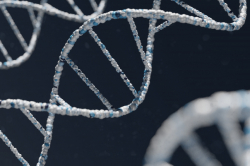A new human organ found. Layers of the body long believed to be dense, connective tissues are actually interconnected, fluid-filled compartments, the scientists report in a new study. The newfound network – interstitium - lies below the skin's surface and between muscles, lining the digestive tract, lungs and urinary systems, and surrounding arteries and veins, the researchers said. They suspect the fluid-filled spaces may act like shock absorbers that prevent the tearing of tissue in organs, muscles and vessels as they move during normal functioning.
Invisibility material made real. Materials inspired by disappearing Hollywood dinosaurs and real-life shy squid have been invented by UCI engineers. The thin swatches can quickly change how they reflect heat, smoothing or wrinkling their surfaces in under a second after being stretched or electrically triggered. That makes them invisible to infrared night vision tools or lets them modulate their temperatures.
AI searches telescope data for evidence of distant planets. NASA has established a crowdsourcing project in which volunteers search telescopic images for evidence of debris disks around stars, which are good indicators of exoplanets. Using the results of that project, researchers at MIT have now trained a machine-learning system to search for debris disks itself.
Knitting electronics with yarn batteries. Researchers have developed a rechargeable yarn battery that can power watches and lights and is waterproof and flexible. It also can be cut into pieces and still work. The group twisted carbon nanotube fibers into a yarn, then coated one piece of yarn with zinc to form an anode, and another with magnesium oxide to form a cathode.
New tech sheds light on body language. A joint research team from the University of Cambridge and Dartmouth College has developed a system for using infrared light tags to monitor face-to-face interactions. The technique uses invisible light to record how people employ body language by measuring body angles and distances between individuals. It could lead to a more precise understanding of how individuals interact in social settings and can increase the effectiveness of communications coaching.




